Improving the delivery experience
Improving the parcel delivery experience
Sendle is a digital courier company that aggregates services of other courier companies and drives to offer an alternative network against the likes of Australia Post (AU), USPS (USA), and Canada Post (CA).

Customer issue
Senders and receivers unsatisfied with our last-mile delivery experience, spending days or weeks back and forth in contact with support
Business goals
This time with support causes issues in our customers satisfaction, loyalty and retention. Causing bottlenecks during peak periods.
The challenge
Locate areas of the customer journey where the service under-delivers and make the necessary improvements
Responsibilities
- UX & CX
- Qualitative research
- Customer journey mapping
- Service blueprints
- Prototyping & hand-off
The approach
As the Lead Product Design for Australia, it was my task, working with the wider organisation, to identify current service level issues and offer solutions which aligns with overall business intentions. This included discovery research, defining the problem space, along with creating and testing UI and UX improvements.
1. Discover
Focus
- Review of existing automation and support processes
- Data analysis of current network performance for on-time deliveries
- Cross-functional team and stakeholder meetings presenting business case
Outputs
- Service-mapping existing experience to highlight shortfalls
- Customer insights to understand expectations
- Stakeholder alignment of expectation and business constraints
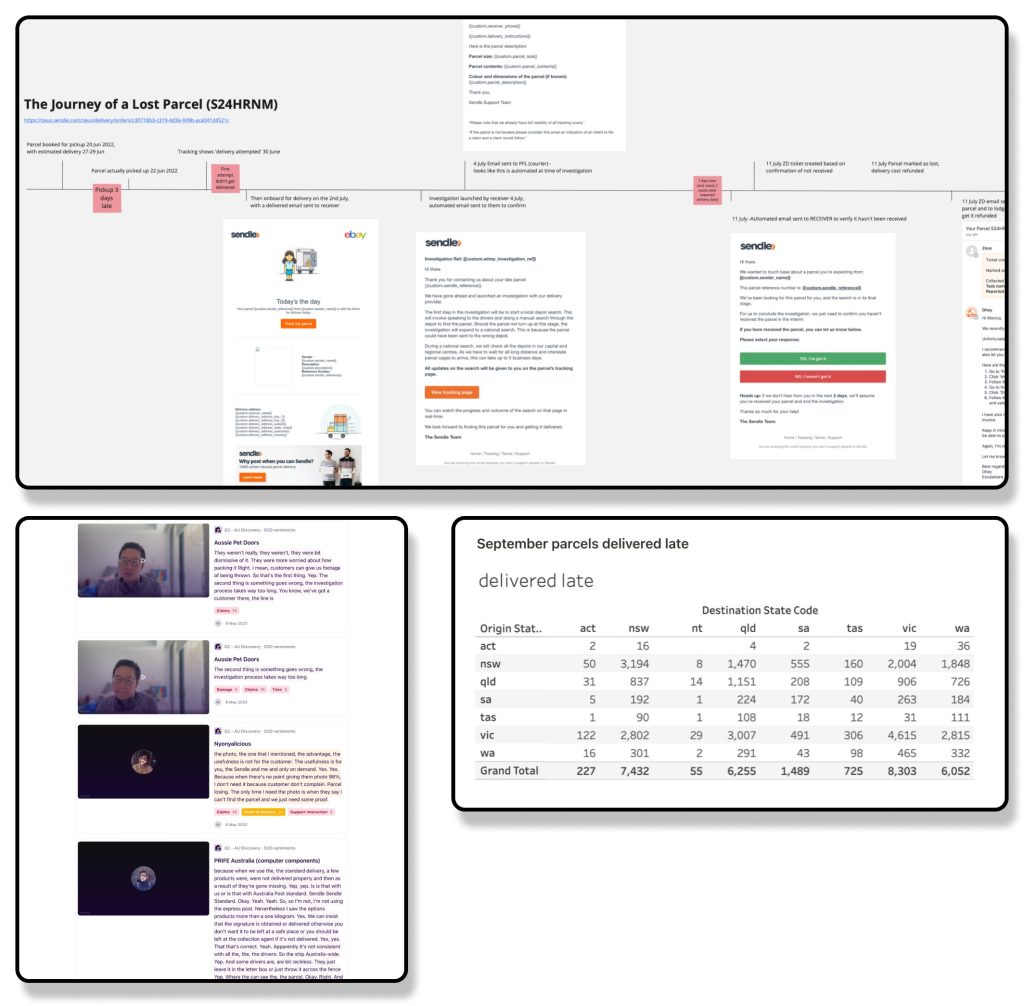
2. Define
Focus
- Analysing data and learnings as a cross functional team
- Exploring opportunities in the service map
Outputs
- Possible How Might We’s to solve the problem
- Records of unknowns that require future validation
- Product roadmap planning and UI/UX recommendations
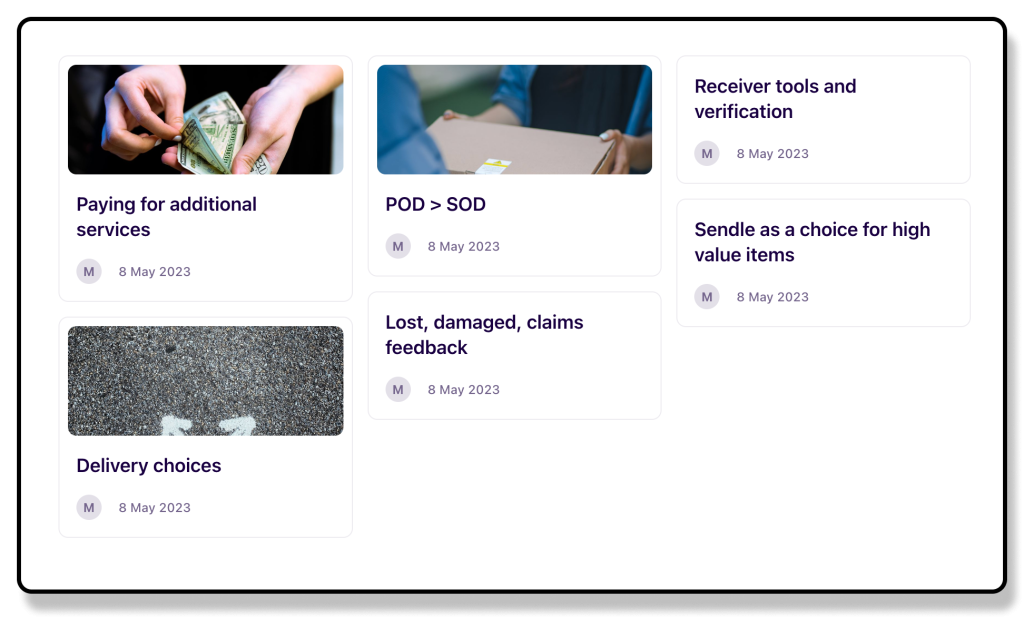
3. Ideate & Refine
Focus
- Exploring possible design solutions to instil confidence in the service
- Gather feedback
- Look for opportunities to resolve related UI/UX issues
Outputs
- Key frames for design and stakeholder review & refinement
- Testing different types of notifications and touch points
- Design for hi-def & edge cases
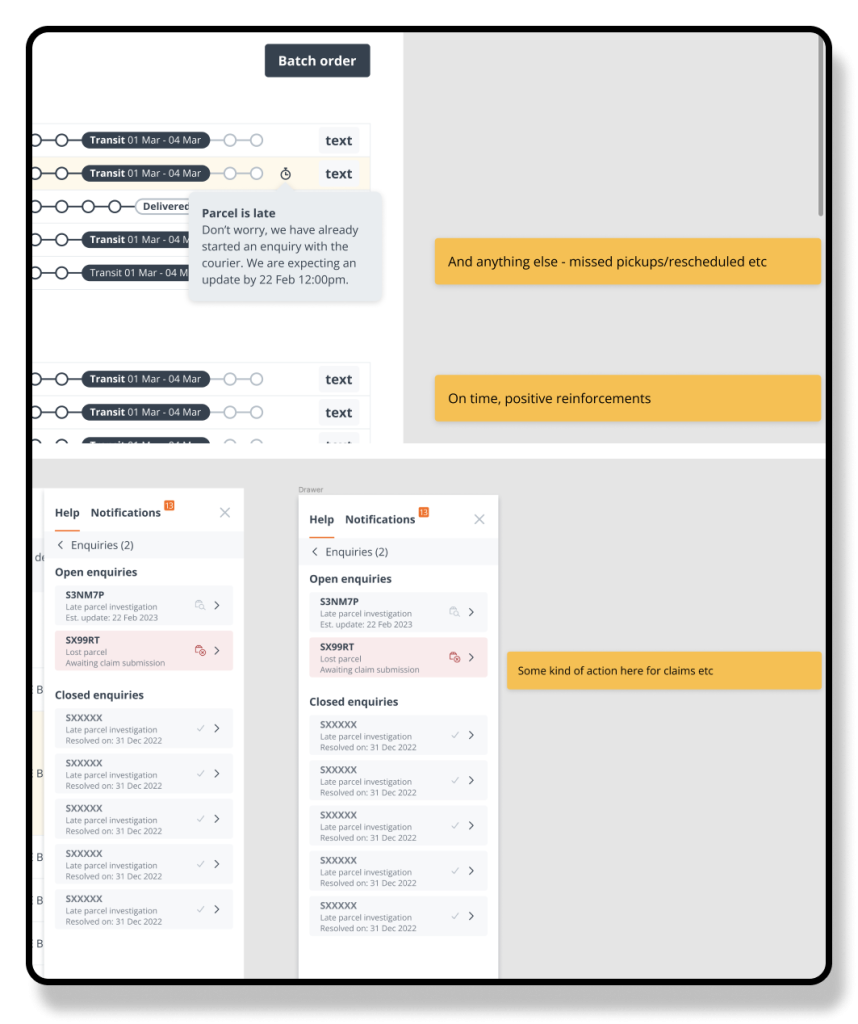
4. Develop
Focus
- Facilitate developers with design solution
- Setup backend system for various notification triggers
Outputs
- Documentation and developer run through of finalised designs
- Email & in-app notification creation
- Component-ise UI elements where required
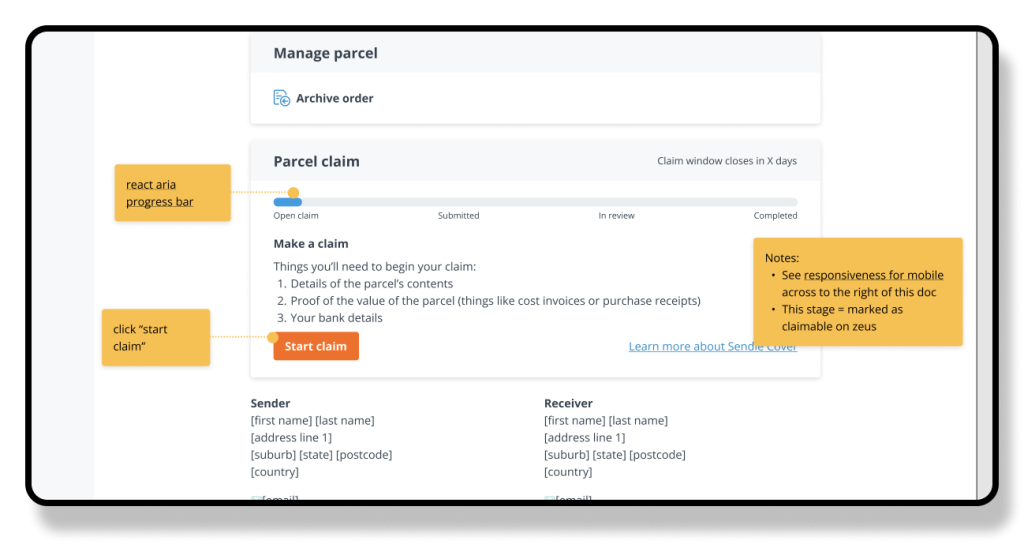
Results
Overall improvements were seen across the 3 solutions during initial testing.
This was played-back to the wider business with the following results.
More frequent delivery updates
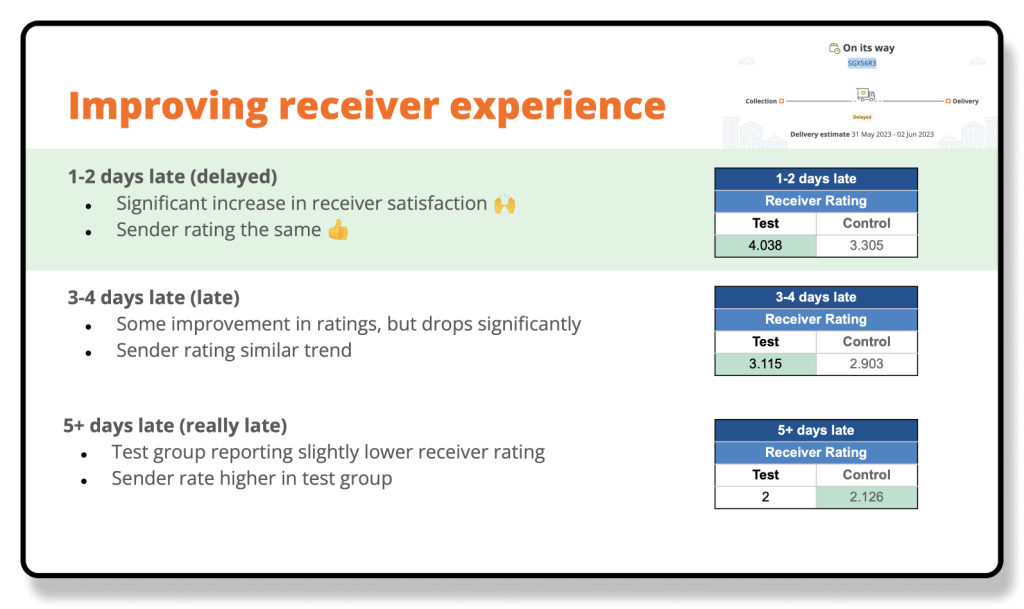
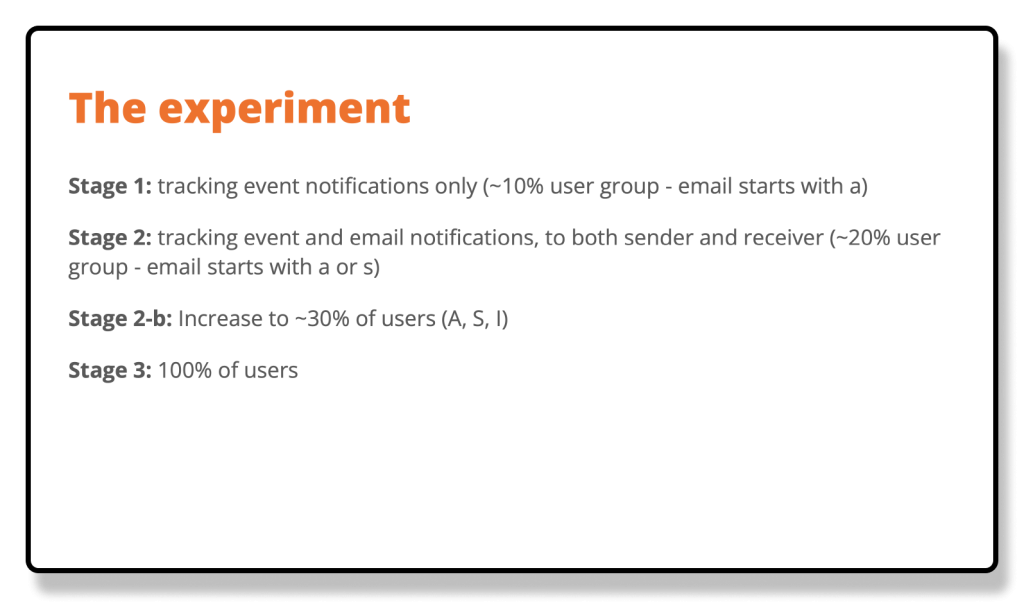
So whilst the delayed notification was effective at reducing support tickets for parcels which were 1-2 days late, we could see that the receiver rating decreased as it got further delayed – in line with our assumptions. Overall it was an effective way to reduce tickets coming through to support and as a flow-on effect, it helped to bring down the first response times from days to under 48 hours.
Signature on Delivery validation
Our assumption going into discovery was that customers would prefer the option to enforce a signature on delivery (SOD) to give them confidence that the parcel was delivered correctly. However from the research our findings indicate the opposite – senders actually preferred other proof of delivery methods, with options of rerouting the parcel as well. This gave us another opportunity area to explore for Photos on Delivery, which ended up as a feature project for the following quarter.
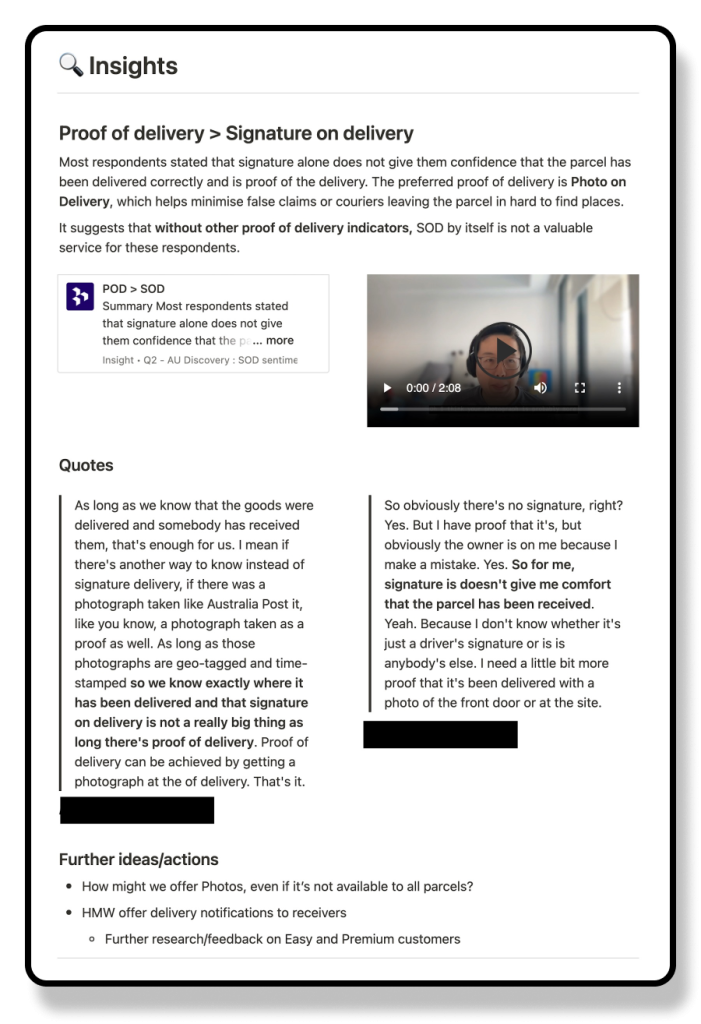
Improve visibility on claims
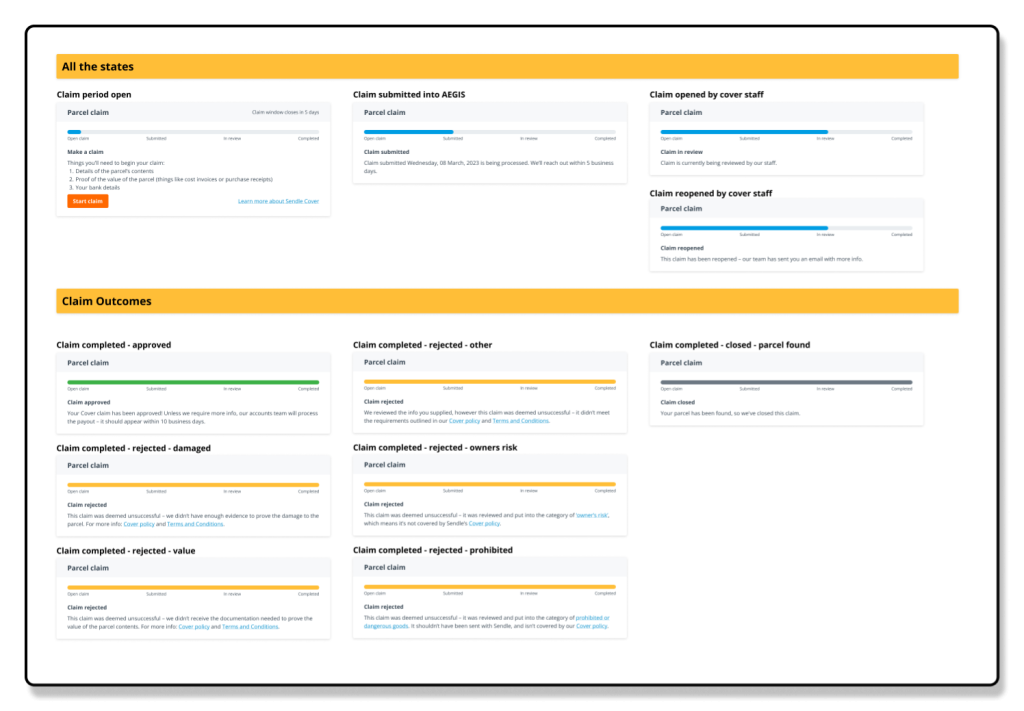
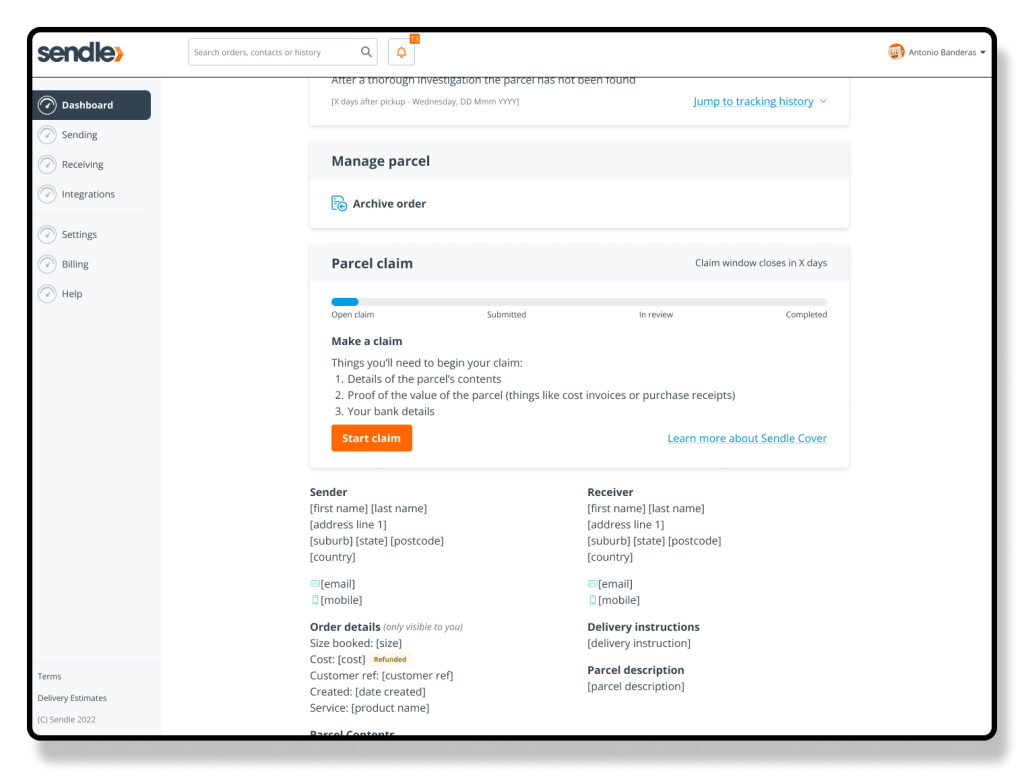
The claims process was streamlined from both a customer and internal support process perspective. By implementing a process and additional touch points, the amount of overdue/stagnant claims were reduced by 15% which meant additional support resources were freed up.
Conclusion
Working with a wide set of constraints initially, we were hone in to get to the customer problem and uncover solutions that helped to improve both customer and internal user experiences by identifying and working across multiple steps in the journey.
